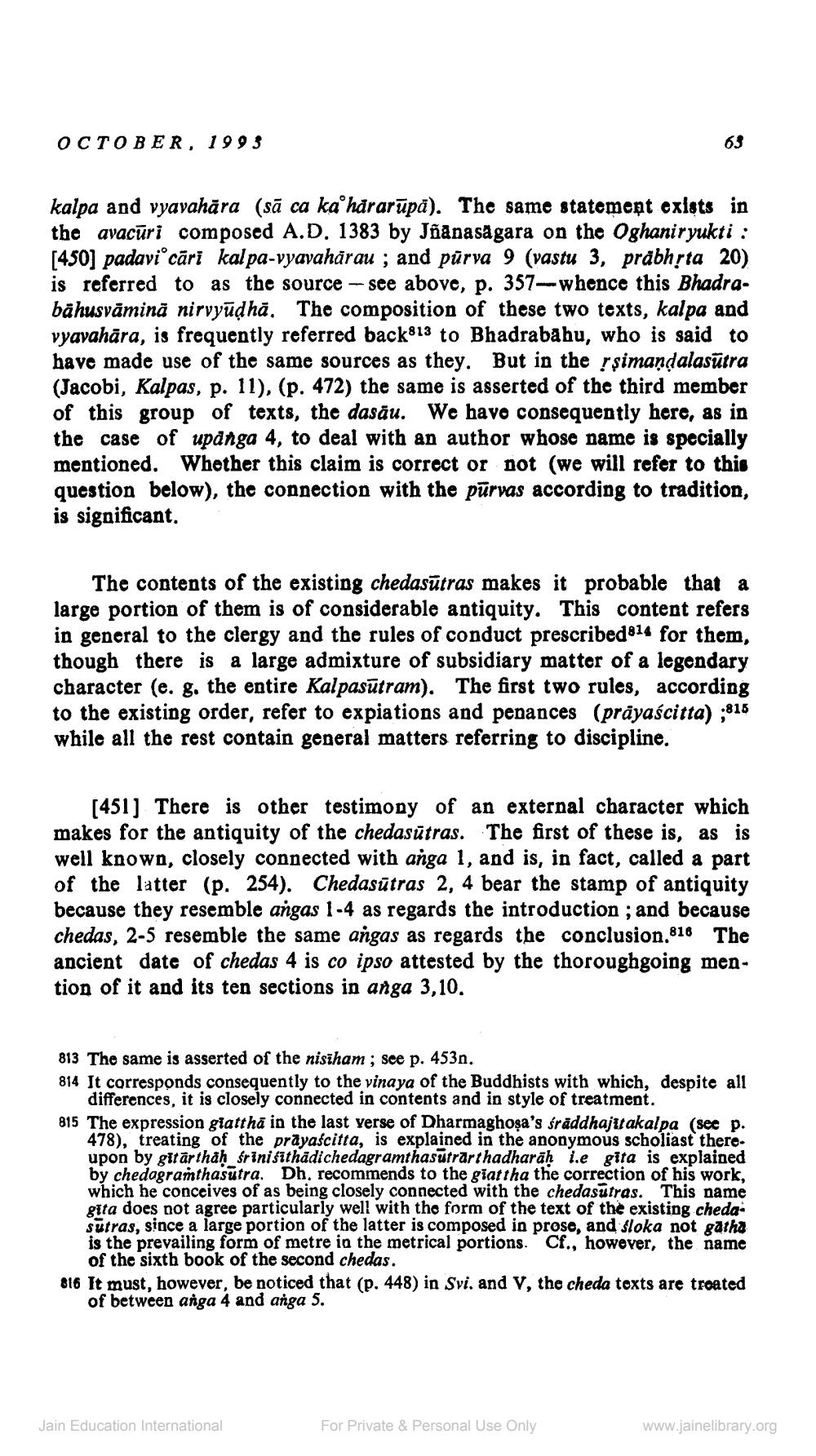________________
OCTOBER, 1993
kalpa and vyavahāra (sā ca ka härarūpā). The same statement exists in the avacuri composed A.D. 1383 by Jñanasagara on the Oghaniryukti : [450] padaviRcārī kalpa-vyavahārau; and pūrva 9 (vastu 3, präbhṛta 20) is referred to as the source -see above, p. 357-whence this Bhadrabāhusvāminā nirvyūḍhă. The composition of these two texts, kalpa and vyavahāra, is frequently referred back813 to Bhadrabahu, who is said to have made use of the same sources as they. But in the rṣimaṇḍalasūtra (Jacobi, Kalpas, p. 11), (p. 472) the same is asserted of the third member of this group of texts, the dasău. We have consequently here, as in the case of upånga 4, to deal with an author whose name is specially mentioned. Whether this claim is correct or not (we will refer to this question below), the connection with the purvas according to tradition, is significant.
63
The contents of the existing chedasūtras makes it probable that a large portion of them is of considerable antiquity. This content refers in general to the clergy and the rules of conduct prescribed814 for them, though there is a large admixture of subsidiary matter of a legendary character (e. g. the entire Kalpasūtram). The first two rules, according to the existing order, refer to expiations and penances (prayaścitta) ;8 while all the rest contain general matters referring to discipline.
.815
[451] There is other testimony of an external character which makes for the antiquity of the chedasūtras. The first of these is, as is well known, closely connected with anga 1, and is, in fact, called a part of the latter (p. 254). Chedasūtras 2, 4 bear the stamp of antiquity because they resemble angas 1-4 as regards the introduction; and because chedas, 2-5 resemble the same angas as regards the conclusion.816 The ancient date of chedas 4 is co ipso attested by the thoroughgoing mention of it and its ten sections in anga 3,10.
813 The same is asserted of the nisiham; see p. 453n.
814 It corresponds consequently to the vinaya of the Buddhists with which, despite all differences, it is closely connected in contents and in style of treatment.
815 The expression glattha in the last verse of Dharmaghosa's śraddhajitakalpa (see p. 478), treating of the prayaścitta, is explained in the anonymous scholiast thereupon by gitarthaḥ_srinisithadichedagramthasutrarthadharaḥ i.e gita is explained by chedagramthasutra. Dh. recommends to the giat tha the correction of his work, which he conceives of as being closely connected with the chedasutras. This name gita does not agree particularly well with the form of the text of the existing chedasutras, since a large portion of the latter is composed in prose, and sloka not gatha is the prevailing form of metre in the metrical portions. Cf., however, the name of the sixth book of the second chedas.
816 It must, however, be noticed that (p. 448) in Svi. and V, the cheda texts are treated of between anga 4 and anga 5.
Jain Education International
For Private & Personal Use Only
www.jainelibrary.org




